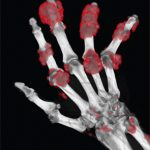Nonsteroidal anti-inflammatory drugs (NSAIDs) have been used therapeutically since the 1960s.1 Evidence of adverse cardiovascular outcomes led to the withdrawal of the selective COX-2 inhibitor rofecoxib in September 2004, when the question of cardiovascular safety of NSAIDs first came into the limelight.2 Valdecoxib (Bextra) was subsequently withdrawn from the market in April 2005 due to…









